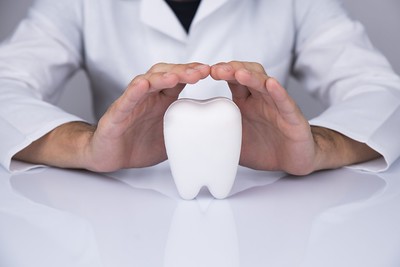Unveiling the Challenges and Consequences
As dental insurance networks continue to impose lower payouts, an increasing number of dentists are choosing to drop out of these networks altogether. This exodus can be attributed to the challenges dentists face, including compromised care dictated by insurance companies and the inability to sustain their practices on reduced fees. In this article, we will explore the reasons behind dentists dropping out of insurance networks, the consequences for both dentists and patients, and alternative options available.
Reasons Why Dentists are Dropping Out of Insurance Networks
1. Compromised Quality of Care:
Dentists strive to provide high-quality care to their patients, but the reduced fees imposed by insurance companies often hinder their ability to do so. Lower payouts force dentists to cut corners, leading to rushed appointments, limited treatment options, and compromised materials or techniques. This compromises the overall quality of care and leaves patients dissatisfied.
2. Unfavorable Treatment Guidelines:
Insurance companies frequently impose treatment guidelines and restrictions that dictate the care dentists can provide. These guidelines may prioritize cost-efficiency over optimal treatment, forcing dentists to follow protocols that may not align with their professional judgment. This discrepancy compromises the personalized care dentists aim to provide and negatively impacts patient outcomes.
3. Financial Strain on Dentists:
The diminishing payouts from insurance companies create significant financial strain for dentists. Running a dental practice involves various overhead costs, including staff salaries, equipment maintenance, and office rent. With reduced fees, dentists struggle to cover these expenses, affecting their ability to invest in advanced technology, continuing education, and overall practice growth.
4. Limited Treatment Options:
Insurance companies often limit coverage for certain procedures or advocate for less costly alternatives, ignoring the nuanced needs of patients. Dentists find themselves constrained by these limitations, unable to offer the most appropriate treatment options for their patients’ oral health. This compromises the dentist-patient relationship and prevents patients from receiving the best possible care.
5. Decreased Access to Preferred Dentists:
As dentists increasingly drop out of insurance networks, patients experience reduced access to their preferred dental providers. Insurance networks often require policyholders to select from a limited pool of dentists, leaving patients with fewer choices and potentially forcing them to compromise on their preferred providers. This limitation may adversely affect the continuity and quality of dental care received.
6. Frustration for Patients:
Patients with dental insurance coverage may face frustration when their preferred dentist is no longer in-network. The need to switch dentists can disrupt established relationships and familiarity with their oral health history, causing inconvenience and potential anxiety about receiving care from an unfamiliar provider.
7. Administrative Burden:
Working with insurance companies often involves dealing with complex administrative tasks, such as claim submissions, pre-authorizations, and reimbursement processes. The paperwork and bureaucracy associated with insurance networks can be time-consuming and detract dentists from focusing on patient care. The administrative burden may prompt dentists to opt out of insurance networks to streamline their practices.
Consequences for Dentists and Patients
1. Limited Access to Preferred Dentists:
As more dentists drop out of insurance networks, patients may face reduced access to their preferred dental providers. Insurance networks often require policyholders to select from a limited pool of dentists, potentially forcing patients to compromise on their preferred providers. Limited access can affect the continuity of care and hinder the establishment of a trusted dentist-patient relationship.
2. Compromised Quality of Care:
Reduced fees imposed by insurance networks can compromise the quality of care dentists provide. Lower payouts may necessitate cost-cutting measures, such as rushed appointments, limited treatment options, or the use of suboptimal materials. This compromise in care negatively impacts patient satisfaction and oral health outcomes.
3. Potential Increase in Out-of-Pocket Expenses:
When dentists drop out of insurance networks, patients may face higher out-of-pocket expenses for dental services. Out-of-network dentists typically set their fees based on the actual cost of providing quality care, which may exceed the reimbursement rates established by insurance companies. This can place a financial burden on patients, especially for complex or extensive dental treatments.
However, it’s important to note that many patients have dental insurance plans that offer the same percentage of benefits whether they visit in-network or out-of-network providers. Contrary to the insurance company’s attempt to limit options, policies often continue to provide coverage for essential services, such as 100% coverage for routine cleanings. Patients should carefully review their insurance policy to understand the extent of coverage available regardless of network restrictions.
Alternative Options for Dental Care
1. Fee-for-Service Model:
The fee-for-service model is an alternative option gaining popularity among dentists and patients. Dentists who operate on a fee-for-service basis set their fees independently, based on the actual cost of providing quality care. This model allows dentists to prioritize patient well-being and maintain control over treatment decisions, without the restrictions imposed by insurance networks.
2. Dental Savings Plans:
Dental savings plans, also known as dental discount plans, offer an alternative to traditional insurance networks. These plans provide individuals and families with access to discounted dental services. Patients pay an annual or monthly fee to join the savings plan and receive reduced rates on dental treatments.
3. Health Savings Accounts (HSAs) and Flexible Spending Accounts (FSAs):
HSAs and FSAs are tax-advantaged accounts that allow individuals to set aside pre-tax dollars for healthcare expenses, including dental care. These accounts provide flexibility
FAQs:
1. Why do dental insurance companies impose lower payouts?
Dental insurance companies aim to maximize their profitability. By reducing payouts to dentists, they can increase their own revenues and control costs.
2. How does dropping out of insurance networks affect dentists?
Dropping out of insurance networks allows dentists to regain control over treatment decisions and set their fees. However, it may also lead to a decrease in patient volume initially, requiring dentists to adapt their business strategies.
3. Are there any advantages to staying within insurance networks?
Remaining within insurance networks can provide a steady stream of patients and simplify administrative tasks, such as claim submissions and reimbursement processes. However, dentists must carefully evaluate the financial implications and treatment limitations imposed by insurance companies.
References:
1. American Dental Association (ADA):
The ADA provides resources and information on dental insurance, dental practice management, and updates on industry trends.
2. Academy of General Dentistry (AGD):
The AGD offers valuable insights on dental practice management and the impact of insurance on dentistry.
3. Dental Economics:
Dental Economics is a publication that covers various topics related to dental practice management, including insurance-related issues and trends.
4. National Association of Dental Plans (NADP):
The NADP is an industry association that provides insights into dental benefits administration and trends in dental insurance.
5. Consumer Guide to Dentistry:
This consumer-oriented website offers information on dental insurance, dental procedures, and tips for choosing a dentist.



